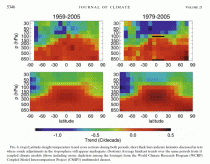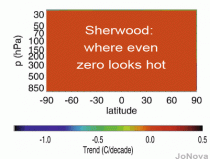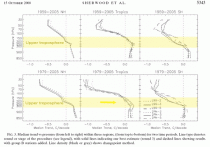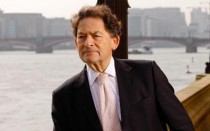By Fred Pearce, The Guardian
Science has been changed forever by the so-called “climategate” saga, leading researchers have said ahead of publication of an inquiry into the affair - and mostly it has been changed for the better.
This Wednesday sees the publication of the Muir Russell report into the conduct of scientists from the University of East Anglia’s Climatic Research Unit (CRU), whose emails caused a furore in November after they were hacked into and published online.
Critics say the emails reveal evasion of freedom of information law, secret deals done during the writing of reports for the UN’s Intergovernmental Panel on Climate Change (IPCC), a cover-up of uncertainties in key research findings and the misuse of scientific peer review to silence critics.
But whatever Sir Muir Russell, the chairman of the Judicial Appointments Board for Scotland, concludes on these charges, senior climate scientists say their world has been dramatically changed by the affair.
“The release of the emails was a turning point, a game-changer,” said Mike Hulme, professor of climate change at the University of East Anglia. “The community has been brought up short by the row over their science. Already there is a new tone. Researchers are more upfront, open and explicit about their uncertainties, for instance.”
And there will be other changes, said Hulme. The emails made him reflect how “astonishing” it was that it had been left to individual researchers to police access to the archive of global temperature data collected over the past 160 years. “The primary data should have been properly curated as an archive open to all.” He believes that will now happen.
Bob Watson, a former chair of the IPCC and now chief environment scientist for the British government, agreed. “It is clear that the scientific community will have to respond by being more open and transparent in allowing access to raw data in order that their scientific findings can be checked.”
In addition, Bob Ward, policy director of the Grantham Research Institute on Climate Change at the London School of Economics, said: “Researchers have to accept that it won’t just be their science that is judged but also their motives, professionalism, integrity and all those other qualities that are considered important in public life.”
Researchers outside Britain say a row that began in Norwich now has important implications for the wider scientific community round the world.
“Trust has been damaged,” said Hans von Storch of the KGSS Research Centre in Geesthacht, Germany. “People now find it conceivable that scientists cheat and manipulate, and understand that scientists need societal supervision as any other societal institution.”
The climate scientist most associated with efforts to reconciling warring factions, Judith Curry of the Georgia Institute of Technology, said the idea of IPCC scientists as “self-appointed oracles, enhanced by the Nobel Prize, is now in tatters”. The outside world now sees that “the science of climate is more complex and uncertain than they have been led to believe”.
Some IPCC scientists are in denial on this issue, she said, arguing that they would like to see the CRU incident as “an irrelevant blip” and to blame their problems on “a monolithic denial machine”, but that won’t wash.
Roger Pielke Jr of the University of Colorado agreed that “the climate science community, or at least its most visible and activist wing, appeared to want to go back to waging an all-out war on its perceived political opponents”.
He added: “Such a strategy will simply exacerbate the pathological politicisation of the climate science community.” In reality, he said, “There is no going back to the pre-November 2009 era.”
Curry exempted from this criticism Phil Jones, CRU director and the man at the centre of the furore. Put through the fire, “Jones seems genuinely repentant, and has been completely open and honest about what has been done and why… speaking with humility about the uncertainty in the data sets,” she said.
The affair “has pointed out the seamy side of peer review and consensus building in the IPCC assessment reports,” she said. “A host of issues need to be addressed.”
The veteran Oxford science philosopher Jerome Ravetz says the role of the blogosphere in revealing the important issues buried in the emails means it will assume an increasing role in scientific discourse. “The radical implications of the blogosphere need to be better understood.” Curry too applauds the rise of the “citizen scientist” triggered by climategate, and urges scientists to embrace them.
But greater openness and engagement with their critics will not ensure that climate scientists have an easier time in future, warns Hulme. Back in the lab, a new generation of more sophisticated computer models is failing to reduce the uncertainties in predicting future climate, he says- rather, the reverse. “This is not what the public and politicians expect, so handling and explaining this will be difficult.”
Read post here.
By Joanne Nova
The line blurs between peer-reviewed-science and peer-reviewed-public-relations.
The Big-Scare-Campaign needed an answer to the missing hot-spot question. They needed to find the “hot spot”, or failing that, at the very least provide a “hot spot” type graph that would answer the critics; something that passed for a scientific answer that might fool journalists and bloggers. The failure to find the projected hot spot is so damning, and so obviously not what the models predicted, that there is a veritable industry of people working hard to find a reason why the weather balloon results must be wrong. Steven Sherwood creatively even resorted to throwing out the thermometer readings entirely and using wind shear instead. (If only we’d known! All those years and we didn’t need the thermometers?)
In Robust Tropospheric Warming Revealed by Iteratively Homogenized Radiosonde Data (March 2008) Sherwood et al combine both windshear and temperature data to reconsider the radiosondes yet again. The Scientific Guide to The Skeptics Handbook and others use the graph from the top left corner of this paper (Fig 1 here) to suggest that the hot spot is not missing, or that the “fingerprint” was found. Sure enough, it’s a cute graph. Looks “hot”, right?

Fig 1. Sherwood 2008: observations (top two) vs models(bottom two). (Note the scale on the enlarged image!)
Peek closely at the scale of the graph. Note the color of zero - that’s right - if there was no global warming in the entire atmosphere, no change, nothing at all happening, the Sherwood interpretation would look like one giant hot-spot:

No change means still looking “hot”
With poor resolution and a carefully chosen color scale the top graphs give the glancing impression that models aren’t doing too badly. But the color scale above is not just counter intuitive, it actively prevents anyone from comparing the trend in the upper troposphere with the surface. Any warming trend at all is “red”. Trend information is lost within the graph. (I considered trying to recolor it but all reds are red if you know what I mean. 101 shades of red might work well for snakes with infrared acuity).
None of the authors, editors, or peer reviewers apparently had any problem with a graph with the meaningless scale. It’s just another endorsement of what you get with anonymous unpaid reviewers.
Here (below) are the earlier graphs that this paper is obviously a response too. Note back in the original CCSP documents that the colour scale helped the reader understand what was happening (even if pink is a questionable choice for the ultra cold). The models predicted a fingerprint of well mixed greenhouse gases that would look like graph A below. The stratospheric cooling (the blue bit at the top) is due to both carbon dioxide as well as declining ozone levels. The warming bit in the bottom half is possibly due to carbon dioxide (in part). But the red hot spot is due to feedbacks from humidity and clouds, with some latent heat release - at least in theory anyway.
In reality the radiosondes don’t find anything like that pattern, which tells us the feedback effects predicted by the models are not describing the real world very well.

Fig 3. The missing hot spot is obvious in these CCSP images (enlarged here).
Broadly consistent?
Can the claim be made that after Sherwood’s adjustments the radiosondes are broadly consistent with models? It all depends on how broad your consistency is. When a zero trend is almost “consistent” with a 0.25 warming trend (namely consistently red), what’s the difference?
In the same vein, I guess the number 1 is broadly consistent with “2”.
Make no mistake, Sherwood was looking for the missing hot spot. In the introduction he makes it clear that’s what this is all about:
The question of whether tropospheric temperatures are participating as expected in climate change has been controversial, with some observing systems reporting changes that are inconsistent with the models (CCSP 2006; National Research Council 2000)… that discrepancies between expected and measured tropospheric warming rates have not been fully explained in the tropics (CCSP 2006).
The title may sound impressively “robust” but the dodgy color choice and the fine print tell a different story. In the abstract no one is exactly gushing:
“The meridional variations of zonally aggregated temperature trend since 1979 moved significantly closer to those of the Microwave Sounding Unit (MSU) after data adjustment. Adjusted data from 5S to 20N continue to show relatively weak warming, but the error is quite large, and the trends are inconsistent with those at other latitudes.”
Note this set of graphs in his Fig 3 (especially the centre ones of the tropics, most particularly 1979-2005):

Sherwood 2008 Fig 3 (enlarged here): The upper troposphere over the tropics (150 hPs - 300 hPa) is supposed to warm about twice as fast than the surface. The warming trend from 1979-2005 should be stronger than the longer timespan. (Yellow annotation added by Jo Nova showing the zone where the models predict the greatest warming trend.)
In the conclusion, Sherwood comments on the trend that is within uncertainty bounds (and it happens to be in the lower half of the troposphere), but I can’t see any equivalent numerical focus on the important zone from 150 - 350 hPa (which I highlighted above), and was the apparent reason for doing more adjustments.
Our 1979 - 2005 trends for 850–300 hPa in the tropics are 0.15 - 0.07C decade. This is within uncertainty of the roughly 0.17-0.22 expected on the basis of surface trends of 0.12 - 0.14C decade (CCSP 2006; Santer et al. 2005), and the agreement would improve if one were to remove the deep tropical stations whose behavior is inconsistent with the rest of the network.
There is no justification in the paper for saying that the adjusted sonde data now finally agrees “broadly” with the models. It’s 10 years since the data from the 1979-1999 warming period came in, and team after team has reanalyzed the data every way they can think of, and almost all the reanalyzing seems to be in a non-random model-friendly direction.
The IPCC is 90% sure a disaster is on the way, but ask for evidence that the models are right about the feedbacks and the aggressive certainty evaporates into vague lines about how things are not inconsistent, if you (insert caveat), and (insert adjustment), and (insert particular dataset, in a particular era). Sherwood might have improved the trends, but if he’d have found the holy-grail he’d have said so.
Hat tip to the anonymous person or collective who wrote The “Guide” and to John Cook (maybe the same person) who drew my attention to the Sherwood graph. There’s plenty more to come
References: STEVEN C. SHERWOOD, CATHRYN L. MEYER, AND ROBERT J. ALLEN, HOLLY A. TITCHNER, Robust Tropospheric Warming Revealed by Iteratively Homogenized Radiosonde Data, JOURNAL OF CLIMATE, vol 21 p5336 [PDF]
See Joanne’s excellent post here.
By Louise Gray, Environment Correspondent
“We have said with an extraordinary post-imperial arrogance that we are going to show the world what it should do,” the former chancellor cautions. “We are going to be a great example. Well, we have been an example of what not to do - by damaging our own economy to no conceivable purpose.”

Western countries may be prepared to sign up to swingeing emissions cuts, Lord Lawson believes emerging nations, such as India and China, will never agree to them. It is arrogant of rich nations, such as Britain, to ask them to adopt a policy that might limit economic growth, he says.
He acknowledges that the world has grown warmer in the past 100 years, and that it is likely that man-made greenhouse gases “played a part” in that warming. But he believes the science is uncertain: “We need to get off this absurd carbon-cessation hook that will be hugely damaging to the economy and society. What we should be doing is monitoring what is happening very carefully and closely and preparing to adapt to any changes that might occur.”
The last round of United Nations talks on climate change in Copenhagen at the end of 2009 failed, but the issue came up again at the G8 last weekend, and the UN will resume talks at the end of this year towards getting a global deal. Despite support for a global agreement on climate change among his Tory colleagues, including the Prime Minister, Lord Lawson said it was misguided.
He also said domestic policy to cut greenhouse emissions by 80 per cent by 2050 would drive manufacturing abroad and limit growth.
However, Chris Huhne, the Energy and Climate Change Secretary, has said Britain would continue the policy of the last administration by committing to cut emissions first before asking poorer countries to take action.
“Europe must take a lead in securing an international climate agreement, though we can’t just click our fingers and hope the rest of the world will follow. We’ve got to make real emission cuts at home, and work constructively with all other nations in achieving that ambitious deal,” he said.
See post here.


